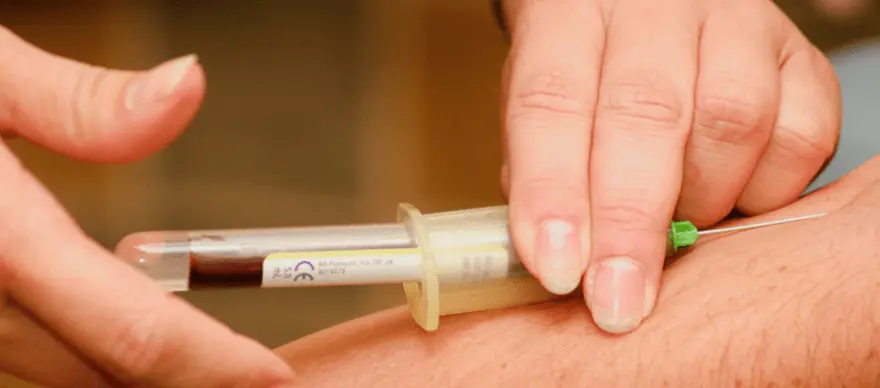Health Wellness
Test For Lungs | Lung Cancer Testing - How to Detect & Identify Early Signs
5537 Views
0

Introduction
Lung cancer is the second most common cancer. Early identification of cancer improves patient outcomes. However, most patients with lung cancer are unaware they have the disease until it has spread to other organs in the body.
People at high risk of lung cancer have to undergo screening procedures like medical imaging scans, which have inherent risks. Therefore, researchers focus on developing blood tests to identify lung cancer before the disease is symptomatic. This article will explore different tests to detect cancer and how blood tests can be beneficial in lung cancer detection.
What is Lung Cancer?
Cancer is developed by uncontrollable cell growth. Cancer that forms in the tissues of the lungs is known as lung cancer. It may spread to the brain or lymph nodes. Other cancers may also reach the lungs. Metastases are cancer cells that spread to other organs.
The two common types of lung cancer are small cell and non-small cell lung cancer. These types of lung cancer have distinct growth patterns and have different treatments. Small-cell lung cancer is less common.
What Tests Detect Lung Cancer?
If you suspect lung cancer, your doctor may perform a series of tests to check for cancerous cells and rule out other conditions.
Lung Cancer Detection Using Image Processing
Imaging tests provide images of the inside of your body using X-rays, sound waves, magnetic fields, or radioactive chemicals. Doctors may perform Imaging tests before and after a lung cancer diagnosis. These tests help to check the following:
- To assess treatment efficiency
- To look for cancer recurrence after treatment
- To determine the spread of cancer
- To check for cancerous growths in suspicious areas
Chest X-ray
In most cases, your doctor will begin by conducting a chest X-ray to search for any abnormalities in the lung. If anything appears suspicious, your doctor may prescribe more tests.
Computed Tomography (CT) Scan
CT scan provides cross-sectional body pictures on a computer using X-rays. It detects lung cancers more often than chest X-rays. It may also detect enlarged lymph nodes and lung tumours with cancer. This test can also screen for adrenal gland, liver, brain, and other organ masses caused by the spread of lung cancer.
CT-Guided Needle Biopsy
Doctors may use a CT scan to guide a biopsy needle to get a tissue sample if a suspected cancerous location is deep in your body.
Magnetic Resonance Imaging (MRI) Scan
The images of the body's soft tissues produced by MRI scans are incredibly detailed. MRI scans use powerful radio and magnetic waves rather than X-rays. When lung cancer has reached the brain or spinal cord, doctors use MRI scans to detect it.
Positron Emission Tomography (PET) Scan
Doctors inject radioactive tracers into the blood for a PET scan. They collect in the areas where the tissues are damaged and represent as bright spots.
PET/CT Scan
PET and CT scans are sometimes combined using a specific machine that can conduct both at the same time. It enables the doctor to compare more radioactive regions on the PET scan with a more detailed CT scan. For lung cancer patients, it's the most common PET scan.
Bone Scan
In a bone scan, doctors inject low-level radioactive material into the blood and collect in abnormal bone. Doctors can use a bone scan to determine if cancer has migrated to the bone. This test isn't compulsory as PET scans indicate if cancer has migrated to the bones.
Sputum Cytology
It is possible to detect lung cancer cells in sputum by looking at it under the microscope when you have a cough.
Biopsy
A biopsy includes collecting a sample of abnormal cells. A lighted tube is inserted down your neck and into your lungs during bronchoscopy, a procedure your doctor can use to take a sample.
Another option is mediastinoscopy, which involves creating a tiny incision at the base of the neck and inserting medical equipment under the breastbone to get tissue samples from your lymph nodes.
Your doctor may conduct a needle biopsy by inserting a needle through your chest wall and into your lung tissue to collect abnormal cells using X-ray or CT scan pictures. Doctors may get a biopsy sample from your liver, lymph nodes, or other places where cancer has spread.
Lab analysis of cancer cells will identify the type of lung cancer. A sophisticated test for lung cancer detection reveals specific properties of the cells and helps determine your prognosis and plan your treatment.
Metropolis Healthcare limited offers a complete diagnostic profile for helping the patients which includes immunohistochemistry for biomarkers i.e., PDL1, ALK and a wide range of tumour panels to detect specific mutations in patients through next generation sequencing and digital droplet PCR (e.g., cell free DNA for EGFR).
Can Blood Tests Identify Lung Cancer?
Researchers are looking into biomarkers in your blood as a potential early-detection tool for lung cancer. If you have a biomarker, doctors can objectively monitor your health. In the case of lung cancer, cancer cells release abnormal DNA, antibodies, and proteins, which doctors may use for lung cancer screening. Detection of EGFR mutation detection through blood is offered at Metropolis Healthcare limited; this test is used to type the cancer once it has been detected.
Conclusion
Blood based tests which detect cell free tumour DNA are being used for biomarker testing. Research is ongoing and future will see them being used in diagnosis













1701259759.webp)









 WhatsApp
WhatsApp